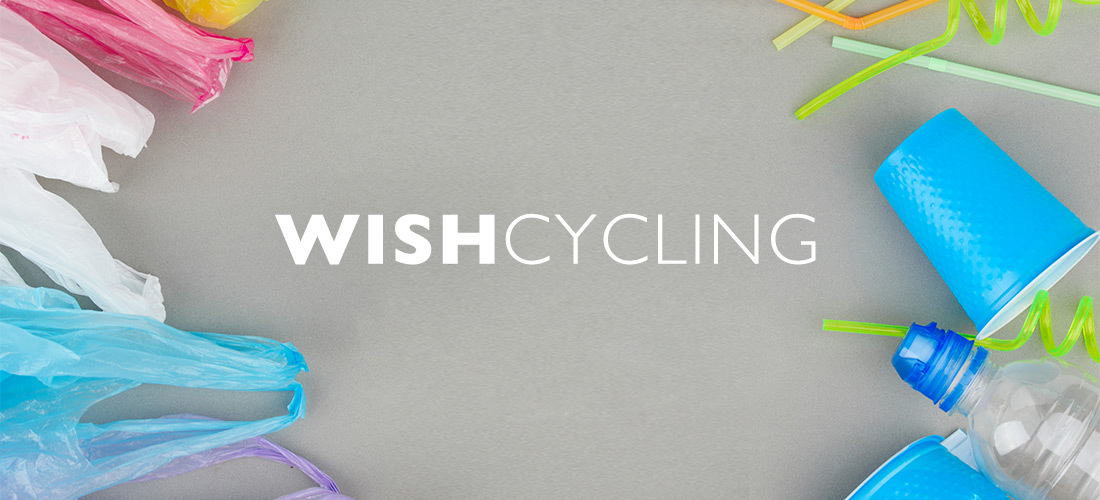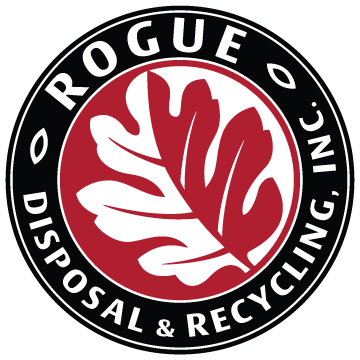Are you recycling or wishcycling?

Everyone knows what recycling is. But what about “wishcycling?”
Wishcycling is the act of putting something in your recycling cart without knowing for sure if it’s actually recyclable. You have good intentions, but you’re not sure if that pizza box, Styrofoam cup, plastic bag, and deli container with food residue can really be recycled — and they can’t.
Hope is the key component of wishcycling. You care about the environment. You want to conserve resources. And you want to recycle as much as possible, hoping the items you toss in the recycling cart will become new products.
Most of us have finished a take-out order or looked at the pile of foil paper and bows after a birthday party and wondered where it should go. Does it belong in the garbage can or the recycling bin? Better safe than sorry, right, you’re “pretty sure” it can be recycled, so into the roll cart it goes. This is wishcycling.
How did we get here?
In the 1970s, the U.S. recycling industry was launched in response to growing public concern over litter and waste. Over the next several decades, the growth of recycling and collection programs changed the way people viewed waste.
The biggest issue came when the plastics industry started stamping packaging and products with a resin identification code (a number, 1 though 7) inside a chasing-arrow triangle — a symbol that consumers thought meant it could be recycled. The reality, however, was that only resin #1 (plastic bottles) and resin #2 (milk jugs, detergent bottles) are relatively easy to recycle and have viable markets. The others are so much harder to recycle that most jurisdictions don’t even collect them.
No place to go
For years, China bought millions of tons of scrap metal, paper and plastic from wealthier nations for recycling. This gave countries around the world a cheap and easy way for managing the waste materials that weren’t feasible to recycle at home. But in 2018, China launched Operation National Sword, which effectively ended the import of waste materials from other countries.
The recycling contamination restrictions set by China created enormous backup of materials in the United States, where many of the materials collected don’t have value as a recyclable material — and never have. Consumers quickly saw that recycling was neither as reliable nor as environmentally friendly as they had previously believed. That’s when the term “wishcycling” became part of the conversation.
How to prevent wishcycling
The reality is that right now, what is accepted in curbside programs needs to be aligned with the ability to sort, process and find responsible end markets for the materials in the cart. For customers of Rogue Disposal & Recycling, the materials accepted into your red-lid roll cart include:
- Corrugated cardboard (no pizza boxes)
- Newspaper and inserts (no magazines)
- #1 and #2 plastic bottles and jugs (neck smaller than the base, rinsed out, no lids)
- Tin and aluminum cans (rinsed out, no lids)
Placing items in your roll cart that are not actually recyclable contaminates the materials stream, and in some cases, makes the entire load unusable. Wishcycling also damages sorting systems and equipment, makes the sorting process more costly, and threatens an already fragile market for recyclable materials.
Over the past few years, waste management companies (including Rogue Disposal & Recycling) and municipalities nationwide have launched educational campaigns to help people understand which materials are truly recyclable — and the damage done by contaminating the recycling stream. “When in doubt, throw it out,” may sound counterintuitive, but it actually helps eliminate wishcycling while ensuring more materials that can be recycled are recycled.
Discover here how the plastic industry’s big lie created a global environmental disaster.
Learn more here about the Oregon Plastic Pollution and Recycling Modernization Act.
Share This
